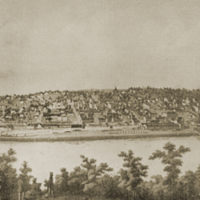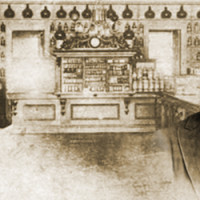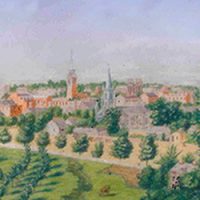
The Smith & Wicks Canning Factory and Packing House was a prominent and influential business in Baltimore during late 19th century. The company was founded by R. Tynes Smith and William A. Wicks, who grew their partnership from a small operation to a mammoth, multi-national company.
Having both been introduced to canning while working at the Thomas Kensett Canning Company, Smith emigrated to the U.S. from the Bahamas at the age of 12 in 1857.
Wicks, born in St. Louis, moved to Baltimore around the same time. Both proved to be naturally adept and talented in the canning business. Within a very short period, both young men quickly advanced in their roles at Kensett, and became quite proficient.
In 1872 both Smith and Wicks left Kensett, and em
barked upon their own business. Forming the Smith & Wicks’ Canning Company, the firm rapidly grew, extending its reach to across the entire United States.
For years the canning business struggled to perfect an ideal canister for packaging food. Though innovations had been made prior to the establishment of their company, it wasn’t until Smith and wicks came along that all of the various improvements were incorporated into one viable solution — a solution which not only included the vessels themselves, but the equipment used to manufacture them.
Of the over 20 patents held by the partners, their biggest innovations were perfecting a way which the cans could be manufactured, and sealed in a way where solder did not leech into the food.

Having attained their initial goal, the partners then focused their attention at extending their venture into the packing business. Creating connections in Bahamas via Smith’s younger past, the two businessmen coordinated the establishment of a pineapple harvesting and packing house in Nassau.

After the harvest of each pineapple crop, representatives of the firm would venture to Nassau, and negotiate purchase of the fruit with Bahamian Pineapple Growers.

According to accounts of the time, Smith & Wick’s venture in the Bahamas provided employment to Bahamian Citizens by hiring and training many men and women who otherwise without the food business, would have been unable to earn a living.

Unlike in the United States, where improved worker protections did not arrive until the early 20th century with the unionized labor movement, the firm’s Bahamian employees worked in environments with better safety, protections, and overall advocacy.
 As time progressed, Smith & Wicks’ expanded their canning interests to include other fruits, vegetables, and oysters.
As time progressed, Smith & Wicks’ expanded their canning interests to include other fruits, vegetables, and oysters.
Supplying cans from their factory in Baltimore, at the company’s peak the firm was sending 750,000 cans to Nassau to be packed.
There, in Nassau, upwards 700,000 of pineapples were annually harvested, packed in the Smith’ and Wicks’ labeled cans, and shipped to the U.S., Britain, and continental Europe.
Throughout the late 19th century, at its peak, the firm manufactured 50,000 cans per day — or approximately 14 million cans annually.
Numismatic Specimens
The first specimen is a Kensett token, the packing company where partners Smith & Wicks learned the canning business. The token is approximately Fine in grade, measures 24mm and was struck in brass.
The second specimen is a Smith & Wicks token in Very Fine grade. It was also struck in brass, but measures 18mm. It is unknown what the AK counterstamp signified or represented.
Notes and Sources
-
The Monumental City – Its Past History and Present Resources, George W. Howard, 1873, pgs. 797-800
-
The Library of Congress Digital Archives
-
Standard Catalog of United States Tokens 1700-1900 Volume 4, Russell Rulau, Krause Publications, ©2004
- New York’s Crystal Palace & The H.B. West Tokens - November 6, 2019
- Edward Aschermann’s Cigar & Tobacco Tokens - November 2, 2019
- George T. Hussey & His Special Message Tokens - October 30, 2019









“AK” = All kinds? Just a guess, as most Maryland farms and seafood packing houses issued coins with a designation of what was being picked or packed.
Hi Jen –
You pose a good question. I will consult with my fellow Maryland Token researchers to see if they have any idea.
Kind regards,
Aaron Packard